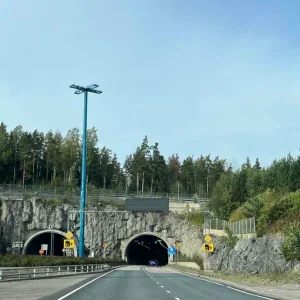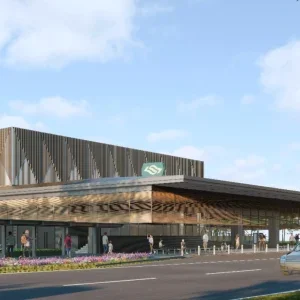The third tender on Canada’s US$238.9M Montreal Metro Line 2 extension is due to go out to interested contractors this month. The section involves construction of a 1.4km long tunnel, part of which passes under the River des Prairies.
This contract is considered to be the most challenging on the 5.2km long project, according to the consultant SGMT (a consortium of SNC-Lavalin, G-Mat, Tecsult and Architects, and Municonsult/Bisson/ Giasson/Farragut), and has been the subject of several geotechnical analyses.
It will be mechanically excavated through limestone with fossiliferous and crystalline layers and some shale. Due to the limited cover, close control will be required throughout construction, especially in the enlarged area where the switches will be housed. The widest point on this stretch will be 15m.
A pilot tunnel will be bored, and then widened to an 8m diameter horseshoe section with vertical pre-reinforcement injected through the widened section to ensure stability.
Constructed on behalf of Agence Métropolitaine de Transport, the single-bore, twin-track tunnel extension has been designed to provide access to the existing metro system for commuters coming into Montreal from the north on Highway 15. The extension should also ease congestion on the bridges that cross between the islands.
Contractors EBC and Nielsen are working on the two tunnel contracts underway, both opting for different tunnelling methods.
EBC is proceeding with drill and blast, with progress rates reported in the region of 3m-3.5m a day, although the noise has upset some local residents. There has also been a tendency for the rock to break along the bedding planes at the top of the arch. Nielsen is using a Voest Alpine roadheader, and has not reported any problems so far.
Both contractors, however, are keeping the rates of progress close to their chests. As John Hansen, engineering director with SGTM, said: “I think the pressure is on, and, of course, with the new tenders coming up, neither party is revealing any details.”
One of the more difficult aspects of the project is making a connection to the live system in a short timeframe; the contractors have to excavate down to within 4m of the crown of the live metro’s concrete tunnel arch, ready for breakthrough planned for 14 weeks’ time. Tunnelling should be complete by the end of 2004, ready for a 2006 opening date.







